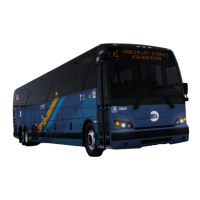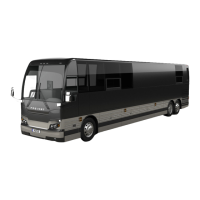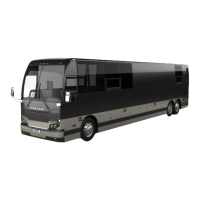DOB 1300-1556 | X3-45 Commuter PA-1648 Maintenance Manual Section 06 revised release October 2021
Charger Capacity
A charger supplying only 5 amperes will require
a much longer period of charging than a charger
that can supply 30 amperes.
9.9.1 Emergency Jump Starting
Both booster and discharged batteries should be
treated carefully when using jumper cables. A
vehicle with a discharged battery may be started
by using energy from a booster battery.
WARNING
DURING EMERGENCY JUMP STARTING …
Cooling fans
WILL start running for a short
while.
Keep hands away from cooling fans. Keep the
radiator door closed.
DANGER
Off-
board battery charger with a start boost
facility must not be used to jump start the
vehicle. This could dam
system.
The following procedure should be used only
when the batteries are discharged.
Do not attempt jump starting if you suspect the
batteries are charged. Inspect the engine
starting system prior to using this procedure.
Wear eye protection and remove rings, watches
with metal bands and other metal jewelry.
Apply parking brake and place the transmission
to Neutral (N) position.
FIGURE 47: QUICK CONNECT JUMP START
CONNECTOR
To jump start, proceed as follows:
1. Shut off all electrical equipment;
2. Remove the protective cap from the quick
connect jump-start connector located in the
engine curb side compartment;
3. Connect the jumper cable to the quick
connect jump-start connector;
4. Start the vehicle with the dead battery;
5. Disconnect the jumper cable;
6. Reinstall the protective cap on the quick
connect jump-start connector.
Jumper cables must be rated at 500 cranking
amperes. If jumper cable length is 20 feet (6
m) or less, use 2/0 (AWG) gauge wires. If
cable length is between 20 to 30 feet (6 to 9
m), use 3/0 (AWG) gauge wires.
DANGER
Any proced
ure other than the above could
result in personal injury, property damage due
to battery explosion, or damage to the
charging system of the booster vehicle or of
the boosted vehicle.
9.10 AGM BATTERY CHARGING
PRECAUTIONS
AGM (Absorbed Glass Mat) batteries require a
voltage-limited, temperature corrected charger.
Make sure your charger is multi-staged and
minimally provides the following voltage values:
Charge stage voltage:
13.8-14.6 V @77°F (25°C)
Float stage voltage:
13.4-13.6 V @77°F (25°C)
Charging AGM battery on a typical constant
current or taper current charger – even one time
– may greatly shorten its life.
9.11 BATTERY EQUALIZATION AND AGM
BATTERIES
Equalization is a controlled over charge.
Conventional batteries may benefit from this
procedure, stirring the chemistry of the entire
battery it counters stratification (layers of
different concentration of electrolyte), and also

